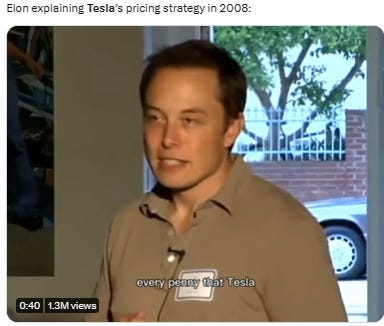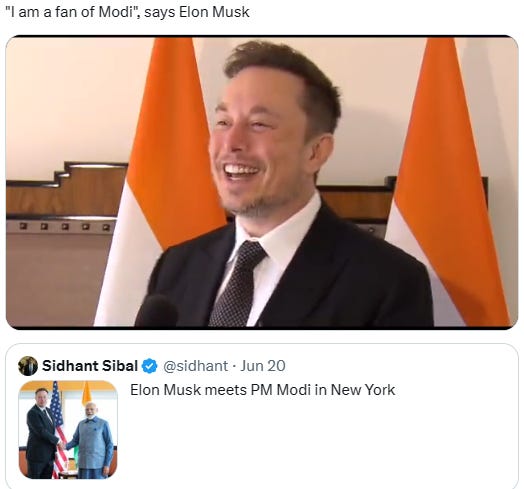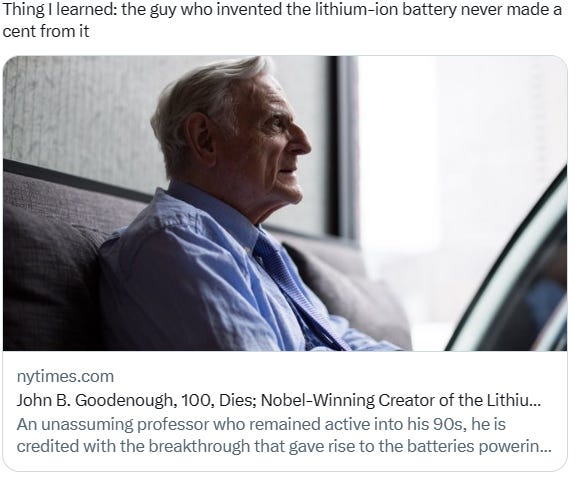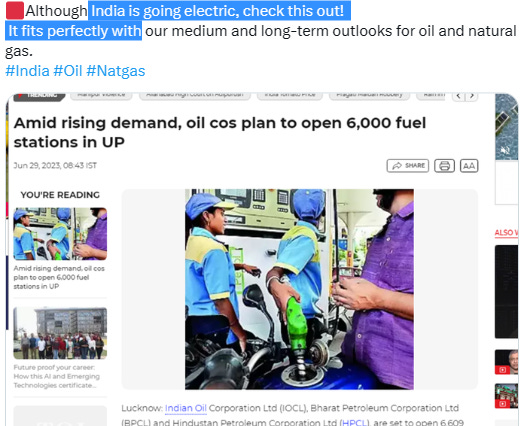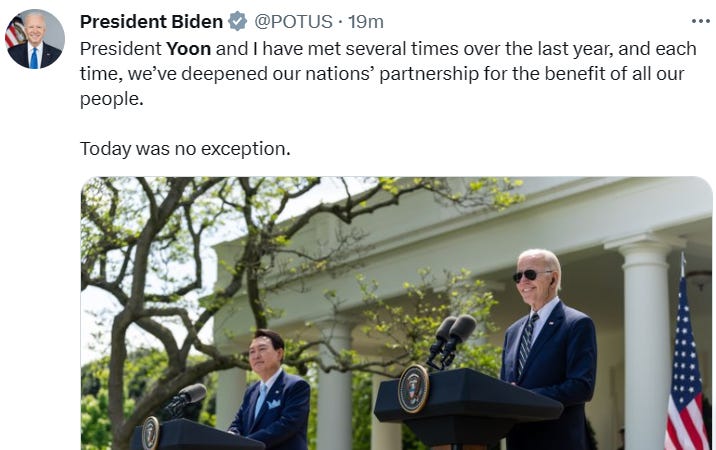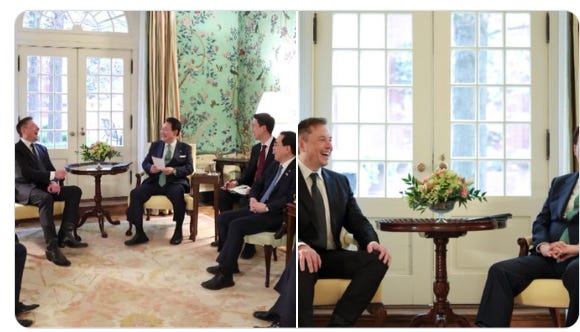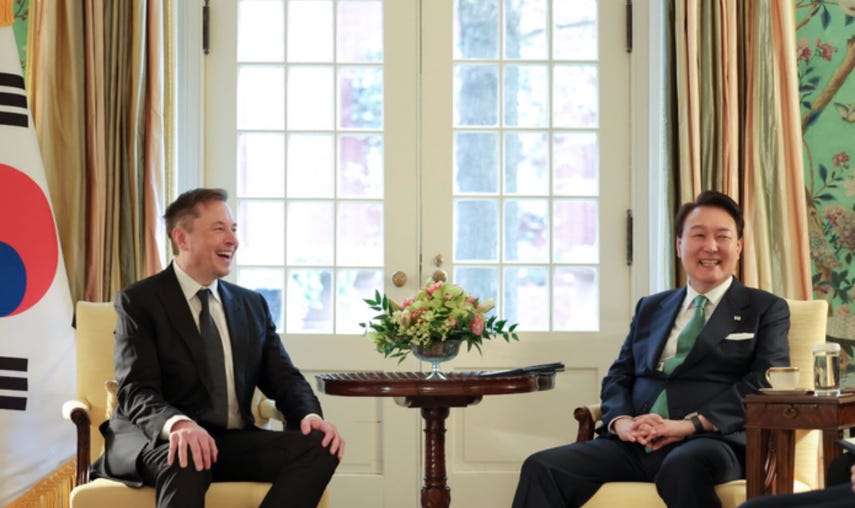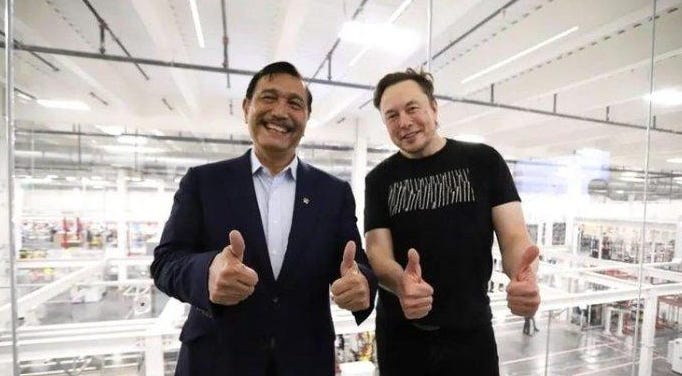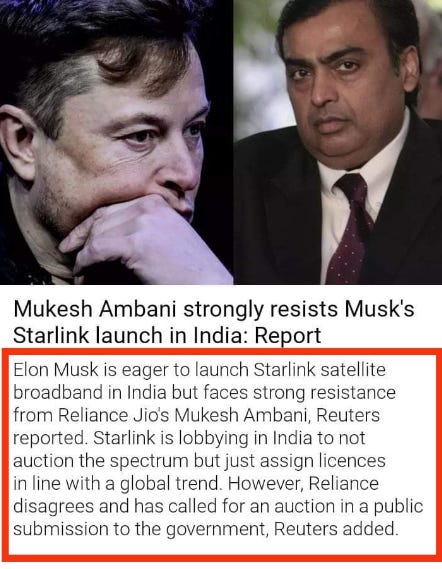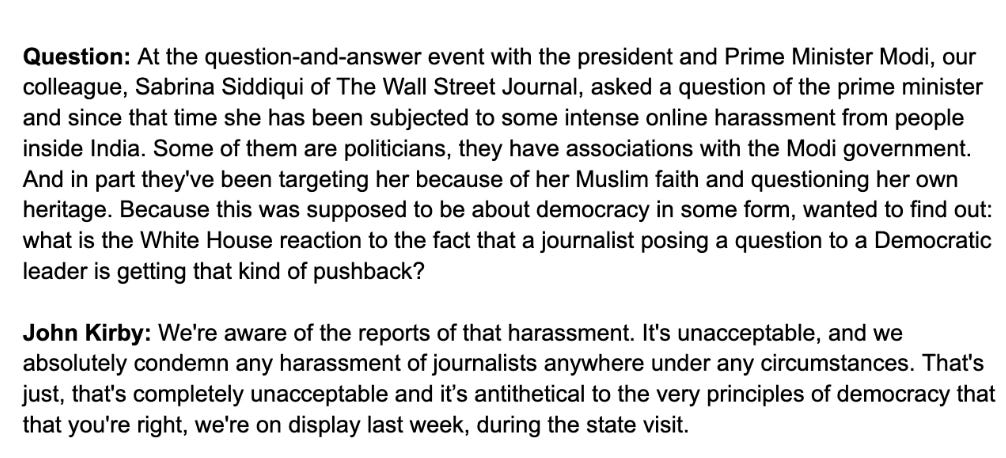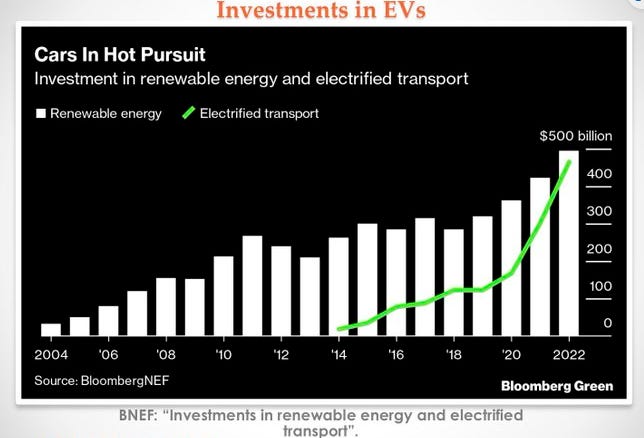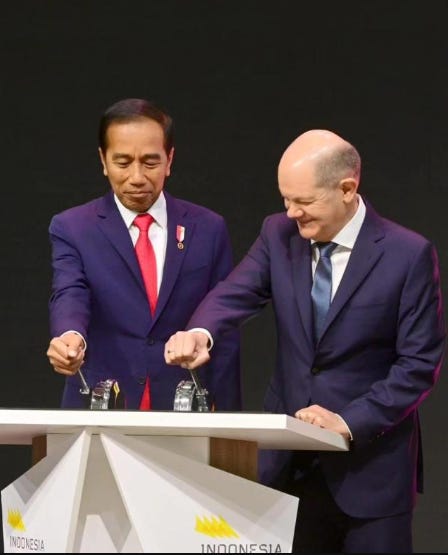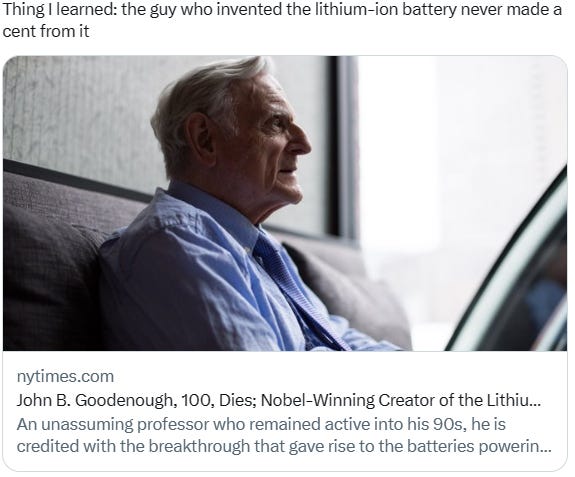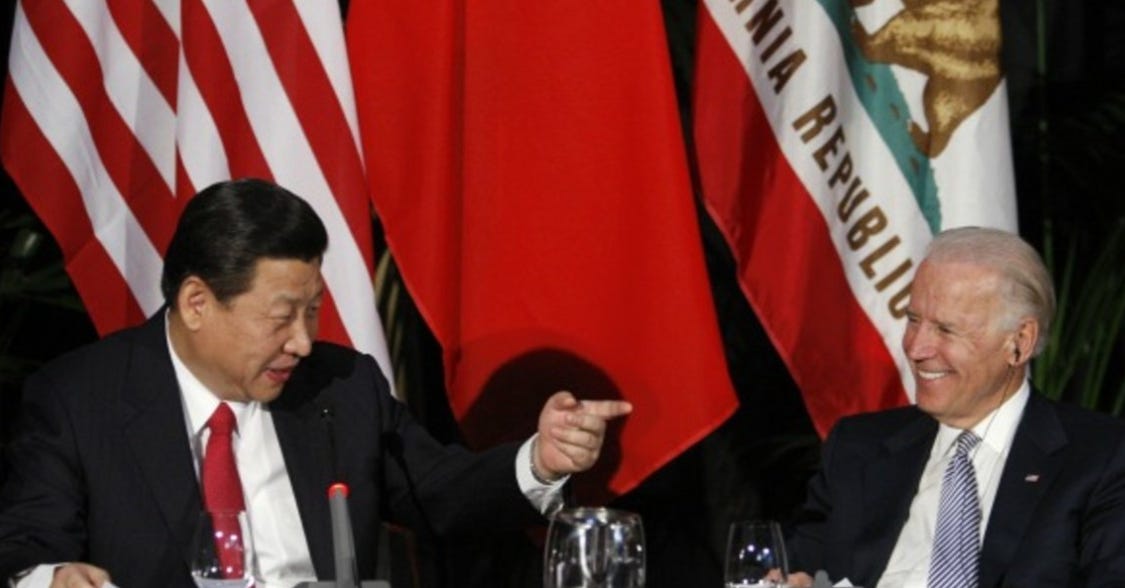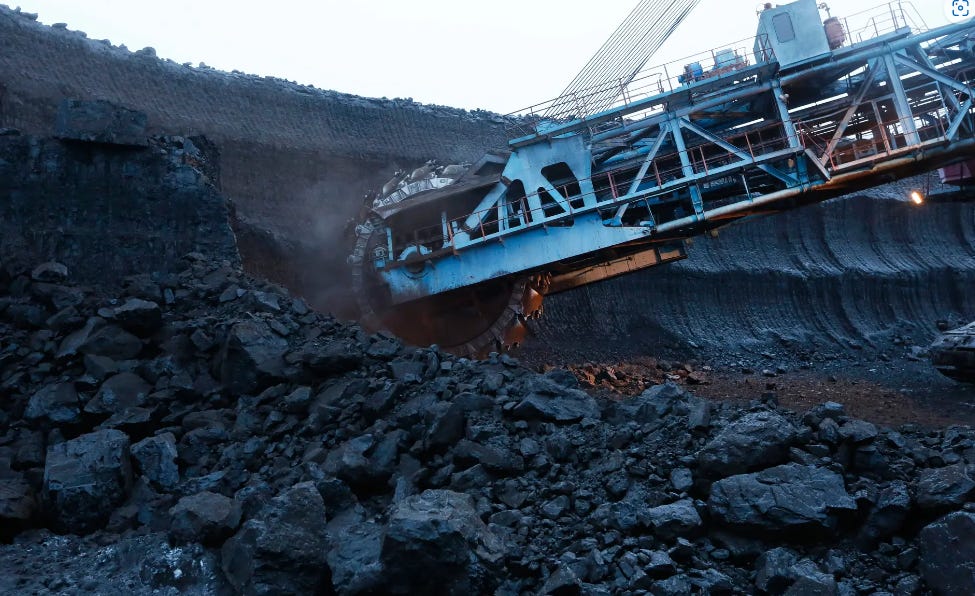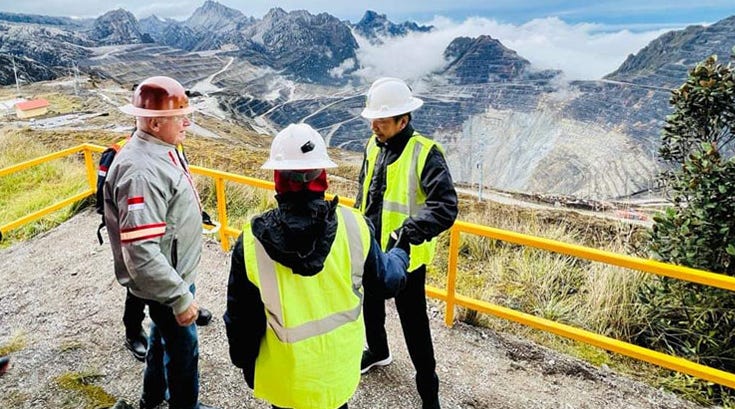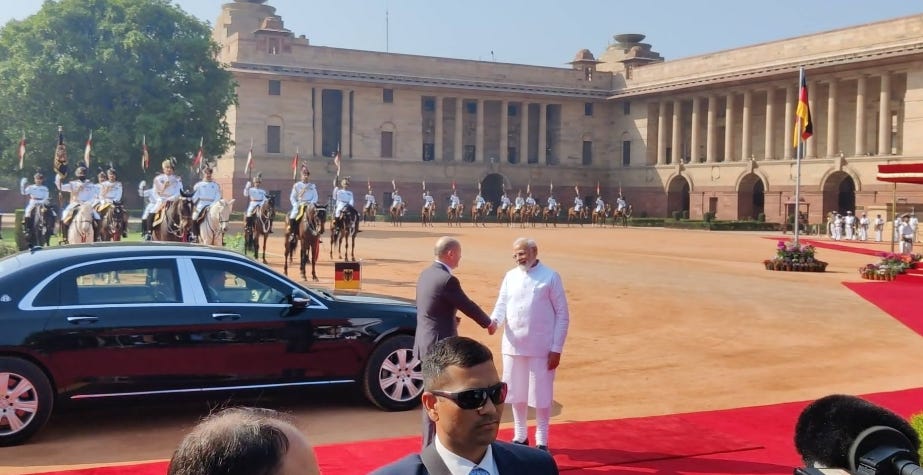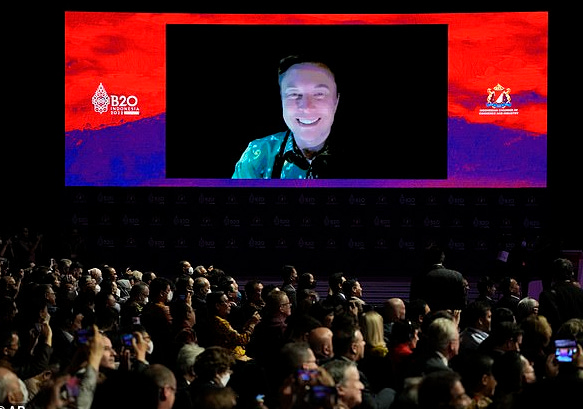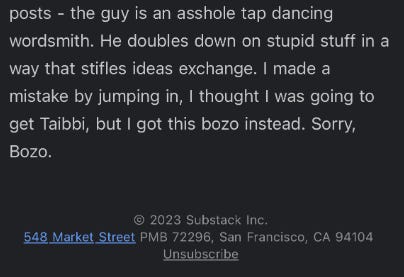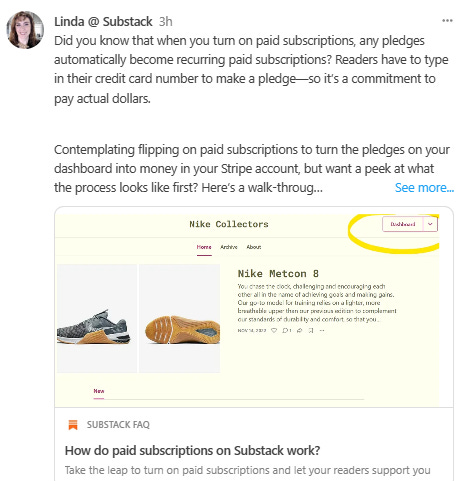Even Indian Admit That Indonesia Has “Better Preparation” to Welcoming Tesla Gigafactory Rather Than India: A (Still) Stuck EV Market in India Although Modi-Musk Meeting.
Austin Texas 3.27am / Washington DC 4.27am / London 9.27am / New Delhi 1.57pm
Tesla just can’t ignore India now. Don’t go by the length of the PM Narendra Modi-Elon Musk meeting in New York (amid Modi State Visit to the U.S.). The potential Tesla Gigafactory or SpaceX facility in India is far. (For India) far more important than the F414 engine. Not really convinced that Tesla setting up a full-fledged manufacturing op in India is a commercially feasible one. The market size currently for cars in the >25L range or very heavy car (which is Tesla's entry level car is, at best, expensive for ordinary Indian people). And how many customers spending 30L will see. Apparently the company doesn't even employ any non-American in its US facilities.
Last time, during a “State Visit” by President Republic of Korea (South Korea) Yoon Seok-yeol, beside meeting with President Biden, Yoon also met Elon Musk inside White House. But until now, no one has realized about Tesla projects in South Korea.
Tesla has gigafactories in Shanghai, Berlin, Austin at 1 million/year. And would love to build one in Indonesia given their position in the battery supply chain and several Chinese mining companies' hold in it.
It might not have lasted very long, but the meeting with Elon Musk was the one meeting of Narendra Modi during his trip to the United States that is hoovering up media attention. Musk, the chief executive officer of electric car manufacturer Tesla and the owner of microblogging site Twitter, space exploration firm SpaceX, satellite broadband provider Starlink, and also neurotechnology company Neuralink that is developing a brain-computer interface, is possibly one of the most important human beings to have ever existed on this planet, given the vast scale and spread of his investments. However, the buzz this time is centred around his renowned automobile company.
As has been reported in the Indian media, Tesla officials have been coming down to the country for visits with its senior bureaucracy. In a previous column, I mentioned that things have materially changed since Tesla’s initial forays into India. This time around, things seem far more serious for Tesla Motors, and it now appears that the company will set up a factory in India. Speaking to a senior executive in an automotive firm who is well-connected to the corridors of power, I learned that Tesla’s plans are firming up every single day. “Elon Musk does not do half-measures; he isn’t going to set up a small assembly line like the Germans. He will go the whole hog when, not if, he invests in India. There will be a proper car manufacturing facility and a battery gigafactory.”
India is a tempting market now, Shashank Srivastava, executive director of Maruti-Suzuki, once told me. The world’s third-largest carmaker after China and US is poised to sell more than 4.1 million vehicles this year. That said, the penetration of electric cars has been extremely limited. Of the 3.89 million passenger vehicles sold in India in the last financial year, automotive website ET Auto estimated only 54,297 units were electric passenger cars. That is a mere 1.4 per cent of the overall market.
Despite strides in affordability made by the likes of Tata Motors, electric cars in India are significantly more expensive than their petrol counterparts. This is because most of their components, including the critical batteries, are almost always imported from China, which dominates the world’s Lithium-Ion battery value chain. India holds just 0.2 per cent of the global battery manufacturing market compared to China’s utterly dominant 77 per cent. The U.S. is not yet ready to compete with #China China in the production of EV, FORD Executive Chairman Bill Ford admits. "I think we see the Chinese as the main competitor, not GM or Toyota. The Chinese are going to be the powerhouse," Ford CEO Jim Farley added.
U.S. auto and battery makers are racing to build battery assembly plants for the transition to electric vehicles. But mining companies and metals processors have moved excruciatingly slowly to establish a domestic supply chain of raw materials and finished electrodes for those batteries. They blame regulators who stretch out permit approvals, activist groups that sue to keep mines from going ahead, and local residents hostile to having hard industry near their homes. The result is a paradox: The U.S. may have more battery plants than it needs later this decade, but a crucial shortage of the materials they require.
In a bid to reduce U.S. reliance on China’s dominant battery industry, President Joe Biden and House Speaker Kevin McCarthy last month hammered out minor changes to the permitting process, including time limits on how long regulators can take to assess the environmental impact of a mining project.
Now the administration is preparing to overhaul the federal mine-permitting process entirely: Behind the scenes, the administration, led by the Department of the Interior, is nearing completion of a road map that, among other things, will recommend updates.
Tesla cars are not cheap; the entry-level, standard range, single-motor Model 3 without any incentives costs around $40,000 (Rs 29.4 lakh) in the US, although incentives from states such as California can halve the price. However, the same car produced at scale at Tesla’s massive Gigafactory in Shanghai costs 229,900 Yuan, which, at the current exchange rates (1 Chinese Yuan = 11.5 Indian Rupees approximately), would be around Rs 26.5 lakh. And given how car prices have inflated in India, that is not a bad price at all; just over the prices of a top-end Maruti-Suzuki Grand Vitara Hybrid.
"They developed very quickly, and they developed them in large scale. And now they're exporting them," Ford told CNN's 'Fareed Zakaria GPS' Sunday program. "They're not here but they'll come here we think, at some point, we need to be ready, and we're getting ready," Ford said.
The U.S. Energy Department is loaning FORD and its battery manufacturing partner $9.2 billion to finance the construction of three EV battery plants in Tennessee & Kentucky, a massive cash infusion meant to ramp up manufacturing capabilities to compete with China. US transport chief Pete Paul Montgomery Buttigieg wants to break China’s EV battery stronghold.
In February, the automaker announced plans to invest $3.5 billion to build an electric vehicle battery plant in Michigan in a deal which involved using technology from Chinese battery company CATL, attracting attention from U.S. Senator Marco Rubio who asked the Biden administration to review the deal.
Bill Ford, who is the great-grandson of company founder Henry Ford, said in the program that the Michigan battery plant is a chance for Ford engineers to learn the technology and then use it themselves.
"It (Michigan) is a wholly owned Ford facility. They'll be our employees, and all we're doing is licensing the technology. That's it." he said.
Ford CEO Jim Farley said in May that Chinese electric vehicle makers are its main rivals in the sector, and that Ford needs distinctive branding or lower costs to beat Chinese automakers.
"I think we see the Chinese as the main competitor, not GM or Toyota. The Chinese are going to be the powerhouse," he said.
Of course, if a Tesla Model 3 is made in India, the price will be closer to the US one, given the need to import components from China. But even at an estimated Rs 35-40 lakh, the Tesla Model 3 will cost about as much as Chinese carmaker BYD’s Atto 3 in India, and well under the (almost) Rs 50 lakh price that Hyundai charges for the IONIQ 5.
Also read: EVs are duping you about carbon emissions. Govt should let diesel cars run longer
India should be a major focus for climate resiliency investment. Beyond, India, managing the approaching disaster and failed state that is Pakistanis going to require a lot of diplomatic effort and will likely create a new flashpoint between the US, the PRC, and India over the next few years. Truly, all of South Asia is at serious risk to climate disaster” »> 50% agree, 50% disagree. (A lot of) hype around India's rise, and the stark reality that on all metrics, India continues to lag China's development. Harvard's and Belfer Center board legendary professor Graham Allison is probably the closest thing the world of International Relations has to an oracle. Allison reminds that India's rise has been predicted for decades (just as China's downfall) but the optimistic (or pessimistic in the case of China) predictions were always proven wrong.
Despite India's growth, India’s economy has remained much smaller than China’s" and the gap between both has actually considerably widened in China's favor. India has been falling behind in the race to develop science and technology to power economic growth" The numbers on this are impressive: - "China graduates nearly twice as many STEM students as India" - "China spends 2% of its GDP on R&D, India only 0.7%." Evidence shows a fall in employment levels (with adverse changes in its composition), a rise in the rate of absolute poverty in rural India, and deterioration in the rate of malnutrition. And Tesla plus SpaceX literally (ultra) high-tech.
To revive animal spirits and restore domestic investment, the Modi governments has made an all-in bet on infrastructure - roads, railways, airports - to create a larger internal market and get capitalists to expand production again. Indian stock market booming. Indvdll sectors are doing great -Finance, real estate, IT, BPO... But stock market is not the economy. Economy is stuck in "jobless growth". Modi's knows he has a problem - high economic growth but few jobs for men & women.
Allison reminds that while China "has eliminated abject poverty, India [still has] high levels of poverty and malnutrition" with India having for instance "one of the worst rates of child malnutrition in the world". The combination of India’s deep-rooted caste system that was an enemy of meritocracy, its massive bureaucracy, and its elites’ unwillingness to address the competing claims of its multiple ethnic and religious groups led him to conclude that it would never be more than 'the county of the future'—with that future never arriving." When Allison asked him specifically whether India could become the next China, he answered directly: “Do not talk about India and China in the same breath.”
India is simultaneously overhyped and written off. Both assessments are wrong. India is the un-China. That doesn't mean it's a failure. A sixth of humanity gradually developing cannot go unnoticed. It just means the way India influences the world will be different from China's. Deeply enmeshed in the family histories and feuds of ~10-12 families than outsiders realize. If you want to be a player in India you have to master everything he describes.
If Tesla enters the Indian market with a full-fledged factory, not only could it completely upend the luxury car market in India with the Model Y and Model X, but it might also develop a smaller vehicle for markets like India. And it will not be alone in doing this; Hyundai and Kia are also discussing the same. While the Kia EV6 and Hyundai IONIQ5 have been winning plaudits, there is talk of an EV1 and IONIQ1, which would be the size of a Hyundai i20.
Even the Toyota-Suzuki combine has spoken of similar vehicles. The Indian market is indeed shifting to the slightly larger 4.5 metre-long SUV body-style vehicles. However, one cannot rule out that a Rs 30 lakh electric car would perform just as well. It might not come with a massive battery pack, but significant advancements in chemistries, particularly the frantic development of Lithium Solid-State Batteries (LiSSB) in Japan, and strides in energy management could still mean fantastic ranges. So a brand-new Tesla car could be developed for India, and it could even be called the Tesla Model 1.
Tesla is developing the ‘Cybertruck’, a pick-up truck for the American market where that body style continues to dominate. It could easily start work on smaller, more affordable vehicles even if it wishes to be the ‘Apple’ of the car industry. After all, Apple developed the iPhone SE as a lower-cost device to entice buyers to ditch Android devices. As for the factory, where could it come up? Do not hold me to this but, according to some of my sources, Uttar Pradesh could be a leading contender for a potential Tesla Gigafactory.
==========END————
Thank you, as always, for reading. If you have anything like a spark file, or master thought list (spark file sounds so much cooler), let me know how you use it in the comments below.
If you enjoyed this post, please share it.
If a friend sent this to you, you could subscribe here 👇. All content is free, and paid subscriptions are voluntary.
————
-prada- is a Helper. Former adviser (President Indonesia) Jokowi for mapping 2-times election. I used to get paid to catch all these blunders—now I do it for free. Trying to work out what's going on, what happens next. Arch enemies of the tobacco industry, (still) survive after getting doxed.
(Very rare compliment and initiative pledge. Thank you. Yes, even a lot of people associated me PRAVDA, not part of MIUCCIA PRADA. I’m literally asshole on debate, since in college). Especially tonight heated between Putin and Prigozhin.
========
Thanks for reading Prada’s Newsletter. I was lured, inspired by someone writer, his post in LinkedIn months ago, “Currently after a routine daily writing newsletter in the last 10 years, my subscriber reaches 100,000. Maybe one of my subscribers is your boss.” After I get followed / subscribed by (literally) prominent AI and prominent Chief Product and Technology of mammoth global media (both: Sir, thank you so much), I try crafting more / better writing.
To get the ones who really appreciate your writing, and now prominent people appreciate my writing, priceless feeling. Prada ungated/no paywall every notes-but thank you for anyone open initiative pledge to me.
(Promoting to more engage in Substack) Seamless to listen to your favorite podcasts on Substack. You can buy a better headset to listen to a podcast here (GST DE352306207). Listeners on Apple Podcasts, Spotify, Overcast, or Pocket Casts simultaneously. podcasting can transform more of a conversation. Invite listeners to weigh in on episodes directly with you and with each other through discussion threads. At Substack, the process is to build with writers. Podcasts are an amazing feature of the Substack. I wish it had a feature to read the words we have written down without us having to do the speaking. Thanks for reading Prada’s Newsletter.




